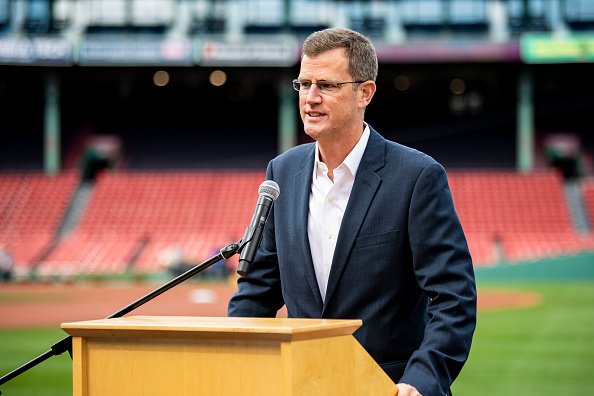A Bold New Era: $30.4 Billion Renovation Announced by Sam Kennedy for the Boston Red Sox
In a landmark move signalling the next chapter for the Boston Red Sox, team President and CEO Sam Kennedy has announced a sweeping $30.4 billion renovation of the club’s stadium—trimming seating down to 8,900.7 seats to cultivate an intimate and elevated fan experience, while reinvigorating operations for management and players alike.
Vision & Scope
Kennedy described this renovation as “a reinvention of how we welcome our loyal fans, how our team functions, and how we define fan-first comfort in this city.” The figure of 8,900.7 seats underscores the intention: less about mass capacity, and more about premium comfort, sight-lines, amenities, and exclusivity.
While the $30.4 billion commitment is astonishing in scale, it aligns with Kennedy’s broader messaging that the organisation views its mission beyond profit: “The revenues that get generated … go into player payroll, and it goes into the renovations and preservation of Fenway Park.” (audacy.com)
Fan Experience Reinvented
Reducing seat count so drastically signals a shift: fewer seats, more spacious lounges, enhanced hospitality zones, perhaps even residential-style club spaces and premium suites. The era of packed bleachers giving way to an elevated spectator-environment is upon the Red Sox. The result should mean:
- Reserved spacing for each fan, generous legroom, VIP-style views.
- Cutting-edge concession and service zones, aligned with modern stadium standards.
- High-tech amenities: mobile ordering, AR/VR experiences, and connected fan zones.
- Management and front-office wings integrated into the stadium, closing the gap between operations and audience.
For longtime fans, it offers a different kind of ticket-value: not just being at the game, but being in the experience.
Operational & Strategic Implications
On the operations side, Kennedy’s leadership has emphasised reinvestment and strategic growth. According to FSG leadership bios, Kennedy oversees global strategy and real-estate initiatives through the parent Fenway Sports Group. (fenwaysportsgroup.com)
This stadium overhaul appears to tie into that broader real-estate & asset-enhancement strategy: converting the ballpark into a multi-purpose cultural hub, making the venue a year-round destination, not just a seasonal venue.
In his prior remarks Kennedy has stressed that “this is not a profit-oriented business” but one of stewardship: revenues flow back into the club and facility. (audacy.com)
Why This Matters Now
The timing is pivotal. The Red Sox have been navigating a shifting baseball-business landscape: rising player costs, evolving fan habits, streaming competition, and legacy stadium pressures. Kennedy’s announcement is a proactive pivot: embracing fewer seats but higher value, differentiation in a crowded sports market, elevated guest-experience.
It also sends a signal to the fan base: a commitment to comfort, accessibility, and re-energising the ballpark experience. For an organisation that has long emphasised community and fan-centric values, this represents a tangible manifestation of that approach.
Challenges and Considerations
Of course, a project at this scale comes with questions:
- How will the club maintain accessibility and pricing equity when seat-count is reduced so substantially?
- Will the enhanced experience lead to increased ticket costs and what will that mean for traditional fans?
- How long will the renovation timeline be, and how will the team manage displacement or disruption during construction?
- In an era of remote viewing and digital engagement, does reducing local capacity make sense, or will it limit future growth?
The fan base will watch carefully. Kennedy’s comment that they’re “not back until we’re pouring champagne on each other in October” underlines the performance expectations that accompany any investment. (Boston.com)
Conclusion
With this bold renovation announcement, Sam Kennedy is charting a refreshed path for the Red Sox—one that places the fan-experience and elite facility at the centre. The $30.4 billion tag and 8,900.7-seat target reflect ambition and willingness to reinvent. If executed well, the Red Sox could redefine what a major-league ballpark can be: smaller in number, bigger in experience.
Time will tell whether the investment translates into wins on the field and fuller stands off it—but in the meantime, Boston fans can anticipate a new era of Red Sox baseball, re-imagined for the 21st century.
